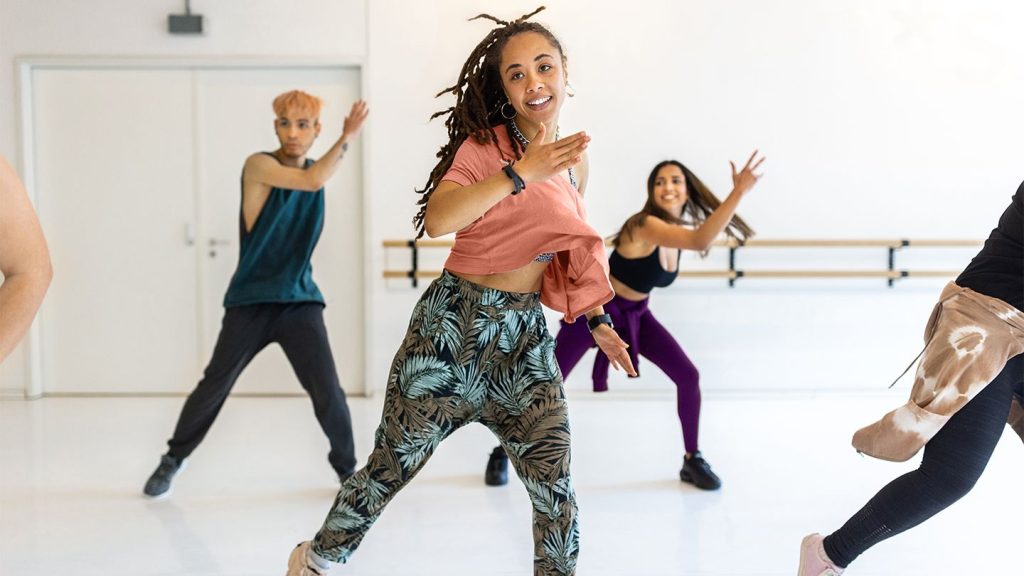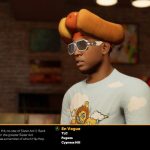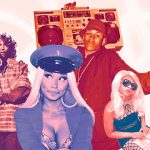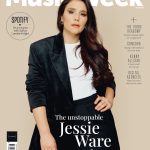Modern music is a diverse and evolving genre that encompasses various styles and influences. It continues to push boundaries and experiment with new sounds, making it ever-changing and exciting for listeners.
With its broad range of genres and sub-genres, modern music offers something for everyone, whether you prefer pop, rock, hip hop, electronic, or even fusion styles. From chart-topping hits to underground movements, modern music reflects the social, cultural, and technological shifts of our time.
It is an integral part of our lives, providing entertainment, self-expression, and a means of connecting with others. So, whether you’re a casual listener or a dedicated fan, modern music is sure to captivate and inspire you.

Credit: www.verizon.com
The Evolving Music Landscape
The music industry is constantly evolving, shaped by technological advancements and changing consumer preferences. In this modern era, the impact of technology on the music industry has been profound, leading to significant changes in consumer behaviors and preferences.
Impact Of Technology On The Music Industry
Technology has revolutionized the way music is created, distributed, and consumed. Here are some key points to consider:
- Digital music revolution: The rise of digital platforms and streaming services like spotify and apple music has dramatically changed the way we listen to music. With the ease of access and vast music libraries at our fingertips, physical cds and vinyl records have become less popular.
- Empowering independent artists: Technology has leveled the playing field for aspiring musicians. With the availability of affordable recording equipment and online distribution platforms like soundcloud and bandcamp, independent artists now have the opportunity to showcase their talent and reach a global audience without the need for traditional record labels.
- Music production advancements: Advancements in music production software and tools have democratized the production process. Artists can now create high-quality music from the comfort of their own homes, reducing the reliance on expensive studios and equipment.
- Virtual concerts and live streaming: The covid-19 pandemic further accelerated the adoption of virtual concerts and live streaming events. Artists and bands turned to platforms like youtube, instagram, and twitch to connect with their fans and provide live performances, creating unique and immersive experiences.
Changing Consumer Preferences And Behaviors
With technology at the forefront, consumer preferences and behaviors have also undergone significant changes. Here are some key points to consider:
- On-demand music consumption: The shift towards on-demand streaming services has allowed listeners to curate their own personalized music experiences. The ability to create playlists, discover new artists, and access music anytime, anywhere has become the norm.
- Rise of music recommendations: With the abundance of music available, algorithms and recommendation engines have become crucial in helping listeners discover new music tailored to their tastes. Platforms like spotify’s discover weekly and apple music’s personalized playlists have become popular avenues for music discovery.
- Social media influences: Social media platforms have become powerful influencers in shaping music trends and preferences. Artists can effectively engage and connect with their fan base through platforms like instagram, tiktok, and twitter, leading to the rise of viral songs and dance challenges.
- Virtual communities and fan engagement: Online communities and fan forums provide dedicated spaces for music enthusiasts to discuss, share, and discover new music. Fan engagement has become crucial for artists to build a loyal following and create a sense of belonging within their fan base.
In this ever-evolving music landscape, technology continues to be a driving force behind the changes and innovations within the industry. As consumer behaviors and preferences continue to shift, it is imperative for artists, music professionals, and industry stakeholders to embrace these advancements and adapt to the changing landscape.
Embracing Digital Platforms
Modern Music: Embracing Digital Platforms
As technology continues to advance, the music industry has witnessed a significant shift towards digital platforms. Musicians and artists are now leveraging these platforms to gain exposure and promote their work on a global scale. In this section, we will explore how these digital platforms, specifically streaming services and social media, have revolutionized the way music is shared, discovered, and enjoyed.
Leveraging Streaming Services For Exposure And Promotion
Streaming services such as spotify, apple music, and youtube music have become a dominant force in the music industry. With millions of users worldwide, these platforms offer an incredible opportunity for musicians to showcase their talent and reach a vast audience.
Here are some key points on how artists can leverage streaming services for exposure and promotion:
- Global reach: Streaming services eliminate geographical barriers, allowing artists to connect with listeners from all around the world. Through digital distribution, musicians can now share their music on a global scale and gain exposure in regions they may have never reached before.
- Discoverability: These platforms provide advanced algorithms and personalized recommendations to help users discover new music. By optimizing their profiles and metadata, artists can increase their chances of being featured in relevant playlists and reaching a wider audience.
- Analytics and insights: Streaming services provide invaluable data and insights on listener demographics, listening habits, and engagement. This information can guide artists in understanding their audience better and tailoring their promotional strategies to maximize reach and impact.
- Collaborations and features: Streaming platforms often promote collaborations between artists, both established and upcoming. By connecting with other musicians and securing features on popular playlists, artists can expand their network and gain exposure to new fan bases.
Creating Engaging Content For Social Media Platforms
Social media has transformed the way we connect and communicate, including the way we interact with music. Artists can utilize various social media platforms to engage with their audience, build a loyal fan base, and promote their music effectively. Here are some key points on creating engaging content for social media:
- Storytelling through visuals: Visual content such as album covers, promotional images, and behind-the-scenes videos can capture the attention of followers and create a strong visual identity for artists. Sharing these visuals across platforms like instagram, facebook, and twitter can help in building recognition and engaging with fans.
- Live streaming and interactive sessions: Platforms like instagram live, facebook live, and youtube live allow artists to connect with their audience in real-time. Hosting live q&a sessions, exclusive performances, or behind-the-scenes glimpses can create a sense of intimacy and forge a deeper connection with fans.
- User-generated content: Encouraging fans to create content related to their favorite songs or albums can drive engagement and create a sense of community. Artists can run contests, challenges, or simply encourage fans to share their experiences with the music, amplifying their reach and fostering a loyal fan base.
- Engaging with fan feedback: Artists can leverage social media platforms as a two-way communication channel. Responding to comments, likes, messages, and actively engaging with their audience helps in building rapport and fostering a loyal fan base.
Digital platforms have revolutionized the music industry, providing artists with unprecedented opportunities for exposure and promotion. By leveraging streaming services and creating engaging content on social media platforms, musicians can expand their reach, connect with their audience, and ultimately thrive in the digital age of music.
So, go ahead and embrace the power of digital platforms to make your mark in the modern music landscape!
Collaborating With Emerging Artists
Collaborating with up-and-coming musicians can bring a fresh perspective to your music projects, create new opportunities, and help you expand your network. Whether you’re an established artist or just starting out, here are some of the benefits of collaborating with emerging artists:
- Fresh ideas: Working with emerging artists can bring a new level of creativity and innovation to your music. Their unique perspectives and fresh ideas can add a new dimension to your sound and help you explore new genres or experiment with different production techniques.
- Networking: Collaborating with emerging artists can help you expand your network and connect with like-minded individuals in the music industry. It provides an opportunity to build relationships with up-and-coming talent, producers, and industry professionals who may play a role in your future success.
- Mutual growth: Collaborations with emerging artists offer a chance for both parties to grow and develop as musicians. By combining your skills and talents, you can learn from each other’s experiences, expand your musical knowledge, and push each other to reach new heights.
- Building a fanbase: Working with emerging artists can introduce your music to their existing fanbase and vice versa. This cross-promotion can help you reach new audiences and gain exposure to fans who may not have discovered your music otherwise.
- Staying relevant: Collaborations with emerging artists can keep your music fresh and relevant in the ever-evolving music industry. By tapping into the latest trends and styles, you can ensure that your music remains current and resonates with younger audiences.
- Inspiring others: Collaborating with emerging artists can serve as a source of inspiration for other musicians. When they see established artists working with newcomers, it can motivate them to pursue their own musical dreams and encourage a spirit of collaboration within the industry.
Nurturing Relationships And Expanding Network
Collaborations with emerging artists not only benefit your music projects but also allow you to nurture relationships and expand your network. Here’s how:
- Creating a supportive community: Collaborating with emerging artists allows you to create a supportive community of musicians who can provide feedback, share resources, and offer encouragement. This sense of community can be invaluable in an industry that often feels competitive and isolating.
- Mentorship opportunities: Collaborating with emerging artists gives you the opportunity to share your knowledge and experience, acting as a mentor figure. By guiding and supporting these artists, you not only contribute to their growth but also establish yourself as a respected figure in the industry.
- Opportunities for collaboration: Working with emerging artists opens doors to future collaboration opportunities. As these artists gain recognition and success, they may remember your previous collaboration and seek to collaborate with you again in the future.
- Industry connections: Collaborating with emerging artists can introduce you to their network of industry professionals, such as producers, managers, and labels. These connections can lead to further opportunities for growth and exposure within the industry.
- Diverse collaborative projects: By collaborating with emerging artists, you can diversify your collaborative projects, exploring new genres, styles, and musical approaches. This variety keeps your music fresh and exciting, attracting a broader range of listeners.
- Supporting the next generation: Collaborating with emerging artists allows you to play a role in supporting and nurturing the next generation of musicians. By sharing your platform and resources, you help create a sustainable and thriving music industry for years to come.
Now that you’re aware of the benefits of collaborating with emerging artists, it’s time to embrace these opportunities and explore new musical horizons. Together, you can create something truly remarkable and leave a lasting impact on the music industry.
Staying Versatile And Adaptable
Embracing Different Musical Genres And Styles
Music is a universal language that has the power to bring people from all walks of life together. In the modern music scene, artists are not confined to a single genre or style. Instead, they are encouraged to explore and embrace different genres and styles to create a unique sound that resonates with their audience.
Here are a few key points to understand the importance of embracing different musical genres and styles:
- Expanding artistic horizons: By exploring different genres and styles, musicians can expand their creative horizons and unlock new possibilities for their music. This allows them to tap into a wider range of emotions and express themselves in ways they may not have thought possible before.
- Reaching a broader audience: One of the major benefits of embracing different musical genres and styles is the opportunity to connect with a broader audience. When an artist creates music that blends elements from various genres, they can appeal to listeners from different musical backgrounds, ultimately expanding their fanbase.
- Breaking boundaries and stereotypes: When artists embrace different genres and styles, they challenge traditional boundaries and stereotypes that may exist within the music industry. This can lead to a more inclusive and diverse representation of music, opening doors for underrepresented artists and sounds.
- Pushing creative boundaries: Experimenting with different genres and styles allows artists to push the boundaries of their own creativity. By breaking away from what is familiar, they can discover new techniques, sounds, and approaches to music-making. This constant evolution keeps their music fresh and interesting.
- Creating a signature sound: Embracing different musical genres and styles also enables artists to develop their unique signature sound. By blending different elements and influences, they can create a sound that is distinctly their own, setting them apart in a crowded music landscape.
Experimenting With New Techniques And Sounds
In today’s fast-paced digital age, musicians are constantly looking for ways to innovate and experiment with new techniques and sounds. This thirst for experimentation allows them to stay ahead of the curve and ensure that their music remains relevant in a rapidly changing industry.
Here are a few key points to highlight the importance of experimenting with new techniques and sounds:
- Fostering creativity and growth: Experimenting with new techniques and sounds pushes musicians to think outside the box and challenge themselves creatively. It encourages them to take risks and explore uncharted territories, leading to personal and artistic growth.
- Staying current and relevant: With the ever-evolving music landscape, artists need to constantly reinvent themselves to stay current and relevant. By experimenting with new techniques and sounds, they can adapt to emerging trends and maintain their relevance in an increasingly competitive industry.
- Inspiring innovation in the music scene: When artists embrace experimentation, they inspire innovation in the wider music scene. Their boldness encourages others to think differently and push the boundaries of what is considered mainstream, ultimately shaping the future of music.
- Creating unique sonic experiences: Experimental techniques and sounds can create unique sonic experiences for listeners. By incorporating unconventional elements or blending different genres, artists can transport their audience to new sonic landscapes, leaving a lasting impact.
- Breaking through creative blocks: Experimentation can act as a catalyst for breaking through creative blocks. By exploring new techniques and sounds, artists can overcome stagnation and reignite their passion for making music.
Music is an ever-evolving art form, and for artists to thrive in the modern music scene, they must embrace versatility and adaptability. By embracing different musical genres and styles, as well as experimenting with new techniques and sounds, artists can keep their music fresh, engaging, and relevant in the ever-changing landscape of modern music.
Building A Strong Personal Brand
In the modern music industry, having a strong personal brand is essential for success. With so many artists vying for attention, developing a unique image and visual identity can set you apart from the competition. Consistency across social media, website, and merchandise is also key in establishing a cohesive and recognizable brand.
In this section, we will explore the importance of these elements in building a strong personal brand.
Developing A Unique Image And Visual Identity
Creating a distinctive image and visual identity is crucial in capturing the interest and attention of your target audience. Here are some key points to consider when developing your personal brand:
- Determine your brand identity: Reflect on your values, personality, and the message you want to convey through your music. This will help you define your unique image and visual identity.
- Image and style: Consider how you want to present yourself visually. This includes your fashion choices, hairstyle, and overall aesthetic. Ensure that your image aligns with your brand identity and resonates with your target audience.
- Consistency is key: Maintain a consistent image across all platforms and settings. This helps your audience easily recognize and connect with your brand.
- Authenticity is essential: Stay true to yourself and avoid trying to fit into a specific mold or trend. Authenticity is what will make your brand stand out from the crowd.
Consistency Across Social Media, Website, And Merchandise
Consistency is vital in establishing a strong personal brand. Here are some key points to consider when ensuring consistency across different platforms:
- Visual consistency: Use the same color schemes, fonts, and logo across all your online channels. This creates a cohesive and recognizable brand identity.
- Tone and voice: Maintain a consistent tone and voice in your social media posts, website content, and merchandise. This helps create a sense of familiarity and builds trust with your audience.
- Regular updates: Stay active and engaged on your social media accounts and website. Regularly update your content, respond to comments, and post relevant updates to keep your audience engaged.
- Quality content: Ensure that the content you share on social media and your website aligns with your brand identity. Provide value to your audience through informative, entertaining, and engaging content.
By developing a unique image and visual identity and ensuring consistency across social media, website, and merchandise, you can build a strong personal brand that will resonate with your audience and set you apart in the competitive music industry. So, go ahead and start crafting your brand today, and watch it flourish as you connect with your fans and leave a lasting impression.
Harnessing Data And Analytics
Data and analytics have become invaluable tools in almost every industry, and the music industry is no exception. In recent years, artists and record labels have been harnessing the power of data and analytics to gain insights into audience preferences, track their success, and make informed decisions.
This data-driven approach has revolutionized the way music is created, promoted, and consumed. In this section, we will delve into how analyzing data and utilizing analytics tools have transformed the modern music landscape.
Analyzing Data To Understand Audience Preferences
Understanding audience preferences is key to creating music that resonates with listeners. By analyzing data, artists and record labels can gain valuable insights into what their audience wants, allowing them to tailor their approach accordingly. Here are some key points to consider:
- Examining streaming trends: Streaming platforms provide an abundance of data that can be analyzed to identify popular genres, songs, and artists. This information helps musicians understand the current musical landscape and allows them to adapt their style to align with audience preferences.
- Social media engagement: Social media platforms offer vast amounts of user-generated data, providing artists with a window into the interests and preferences of their fan base. By monitoring engagement metrics such as likes, comments, and shares, musicians can gauge which content resonates the most with their audience.
- Tracking demographics and geographic data: Analyzing data related to demographics and geographic locations can help artists understand who their fans are and where they are located. This allows them to target their marketing efforts more effectively and plan tours or concerts in areas where they have a strong fan base.
- Gathering feedback through surveys and polls: Musicians can directly engage with their audience by conducting surveys or polls to gather feedback on various aspects such as song choices, album art, or concert venues. This data-driven approach helps them make informed decisions based on the preferences of their fans.
Utilizing Analytics Tools To Track Success And Make Informed Decisions
In addition to understanding audience preferences, analytics tools play a crucial role in tracking the success of music releases and campaigns. Here are some ways in which artists and record labels utilize analytics tools for making informed decisions:
- Monitoring streaming and sales data: Analytics tools provide real-time data on the number of streams, downloads, and sales of music releases. This information helps musicians gauge the success of their songs or albums and make data-driven decisions about future releases.
- Assessing engagement metrics: Analytics tools allow artists to track engagement metrics such as plays, likes, and shares on various platforms. By monitoring these metrics, musicians can determine the impact of their promotional efforts and make adjustments to optimize their reach.
- Identifying marketing channels: Analytics tools assist in identifying the most effective marketing channels for promoting music. By analyzing data on website traffic, social media referrals, and advertising performance, artists can allocate their resources to channels that generate the highest engagement and conversions.
- A/b testing: Analytics tools enable artists to conduct a/b testing by comparing different versions of songs or marketing campaigns. By analyzing data on user engagement and response, musicians can make informed decisions on which version is more effective and resonates better with their audience.
Data and analytics have become indispensable in the modern music industry. By analyzing data to understand audience preferences and utilizing analytics tools to track success, artists and record labels can make informed decisions that optimize their creative output and maximize audience engagement.
This data-driven approach not only benefits artists but also enhances the overall music experience for fans around the world.
Engaging With Fans On A Deeper Level
Modern Music: Engaging With Fans On A Deeper Level
In the digital age, the relationship between musicians and fans has evolved beyond simply listening to music. Now, artists have the opportunity to engage with their audience on a much deeper level. By utilizing fan engagement strategies, musicians can foster growth and loyalty within their fan base.
In this section, we will explore how artists can engage with their fans on a deeper level and the benefits it brings.
Utilizing Fan Engagement Strategies For Growth And Loyalty:
Engaging with fans goes beyond simply posting on social media or replying to comments. It involves creating meaningful connections and providing unique experiences that keep fans coming back for more. Here are some strategies for effective fan engagement:
- Personalized interactions: Take the time to respond to fans individually, addressing them by name and acknowledging their support. This personal touch shows that you value and appreciate their loyalty.
- Exclusive content: Offer your fans exclusive content such as behind-the-scenes footage, unreleased tracks, or live recordings. This can make them feel like they are part of an inner circle and encourages them to stay invested in your music.
- Interactive experiences: Incorporate interactive elements into your online presence. This could include live q&a sessions, polls to gather fan input, or even virtual meet and greets. These interactions allow fans to feel connected to you and create a sense of community among followers.
- User-generated content: Encourage fans to create their own content inspired by your music. This could be artwork, covers, or even dance routines. By showcasing fan-created content on your platforms, you not only make fans feel appreciated but also inspire others to get involved.
- Collaborations: Collaborating with fans or featuring their work can be an excellent way to engage with your audience. It shows that you value their creative contributions and creates a sense of shared achievement.
Organizing Intimate Events And Exclusive Experiences:
In addition to online engagement, organizing intimate events and exclusive experiences can provide a unique opportunity for artists to connect with their fans on a deeper level. Here are some ideas to consider:
- House concerts: Host small, intimate concerts in fans’ homes or other non-traditional venues. These events create a special atmosphere where fans feel like they have a personal connection to you and your music.
- Vip experiences: Offer exclusive vip packages that include meet and greets, backstage access, or even private listening parties. These experiences make fans feel special and give them a chance to interact with you on a personal level.
- Fan club memberships: Create a fan club that offers members exclusive perks such as early access to tickets, merchandise discounts, and exclusive content. This not only rewards your most dedicated fans but also provides a sense of belonging to a community.
- Pop-up performances: Surprise fans with impromptu performances in unexpected locations. This unexpected interaction can generate buzz and excitement, leaving a lasting impression on your fans.
Engaging with fans on a deeper level is a valuable strategy for modern musicians. By utilizing fan engagement strategies and organizing intimate events, artists can foster growth, loyalty, and a strong connection with their audience. Take the time to engage with your fans personally and provide unique experiences to create a thriving fan base that will support you throughout your musical journey.
Balancing Creativity And Commerce
Finding A Balance Between Artistic Vision And Commercial Appeal
In the modern music industry, many artists face the challenge of finding a balance between their artistic vision and commercial appeal. They want to create music that is true to their creative expression while also resonating with a wider audience and achieving commercial success.
Here are some key points to consider when navigating this delicate balance:
- Staying true to your artistic vision: It is essential for artists to stay authentic and true to their own unique creativity. This means pursuing the music they genuinely believe in and expressing their emotions and experiences through their art form. By remaining authentic, artists have the opportunity to connect with listeners on a deeper level and create music that is truly meaningful.
- Understanding your target audience: While artistic expression is crucial, it is also vital for artists to understand their target audience and what type of music appeals to them. By studying the preferences and trends within their intended market, artists can adapt their style and sound to better resonate with their listeners without compromising their artistic integrity.
- Collaborating with industry professionals: Working with experienced producers, songwriters, and musicians can play a significant role in balancing creativity and commercial appeal. These professionals have a deep understanding of the music industry and can provide valuable insights on how to enhance the commercial potential of a song or album without sacrificing the artist’s artistic vision.
- Strategic decision-making: Making strategic decisions is key to finding the right balance. Artists need to consider factors such as genre, lyrics, and style that align with their artistic vision while still having commercial potential. This involves carefully selecting the songs to release as singles, collaborating with other artists, and choosing the right marketing strategies to reach a broader audience.
- Embracing experimentation and evolution: It is important for artists to continuously evolve and experiment with their sound and style. This allows them to break new ground creatively while still appealing to diverse audiences. By embracing change and being open to trying new approaches, artists can find innovative ways to balance their artistic vision with commercial appeal.
- Building a strong brand: Creating a strong brand identity goes hand in hand with balancing creativity and commerce. Developing a unique visual style, consistent messaging, and overall brand image can help artists establish a strong connection with their audience while staying true to their creative vision.
- Finding a supportive team: Surrounding yourself with a team that understands and supports your artistic vision is crucial. From managers and agents to pr professionals and marketers, having a team that shares your artistic goals and values can help navigate the fine line between creativity and commercial appeal.
- Continual self-reflection: Regular self-reflection is essential for artists to assess if they are still achieving the desired balance between creativity and commercial appeal. This introspection allows artists to evaluate their choices, make adjustments when necessary, and stay aligned with their long-term artistic goals.
By finding a balance between artistic vision and commercial appeal, musicians can create music that is both artistically fulfilling and commercially successful. While it is a delicate tightrope to walk, artists who stay true to themselves while understanding their audience and making strategic decisions will ultimately find the sweet spot where creativity and commerce harmonize.
Navigating Legal And Copyright Issues
Modern Music: Navigating Legal And Copyright Issues
With the rise of digital platforms, navigating legal and copyright issues in the modern music industry has become more complex than ever before. As an artist, producer, or music enthusiast, it’s crucial to have a solid understanding of copyright laws and licensing agreements to protect your intellectual property.
In this section, we’ll explore the key points of understanding copyright laws and licensing agreements and how to protect intellectual property in the digital age.
Understanding Copyright Laws And Licensing Agreements
Copyright laws and licensing agreements play a fundamental role in safeguarding the rights of creators and ensuring fair use and distribution of music. Here are the key points to keep in mind:
- Copyright basics:
- Copyright automatically protects original music and lyrics as soon as they are created and fixed in a tangible form.
- It grants exclusive rights to the creator, including the right to reproduce, distribute, perform, and display their work.
- Copyright protection lasts for the life of the creator plus an additional 70 years.
- Licensing agreements:
- Licensing agreements allow individuals or organizations to obtain legal permission to use copyrighted music.
- There are various types of licenses, including mechanical licenses for reproducing and distributing recordings, performance licenses for public performances, and synchronization licenses for music used in visual media.
- It’s crucial to obtain the appropriate licenses to avoid copyright infringement and legal complications.
Protecting Intellectual Property In The Digital Age
The digital age has revolutionized the music industry, providing endless opportunities for distribution and exposure. However, it has also brought new challenges in protecting intellectual property. Consider the following:
- Digital rights management (drm):
- Drm technologies help prevent unauthorized copying and distribution of digital music files.
- It allows artists to place restrictions on how their music can be used or accessed.
- However, drm systems can also be a double-edged sword, as they may limit certain legitimate uses and hinder the overall user experience.
- Watermarking and metadata:
- Watermarking and embedding metadata in digital music files can help identify the original creator and track the usage of the music.
- It enhances accountability and traceability in cases of copyright infringement.
- Online platforms and streaming services:
- Platforms like youtube, spotify, and apple music have introduced content identification systems to detect and address copyright violations.
- Artists and copyright holders can register their works with these platforms to monitor and monetize their content effectively.
In the digital age, being proactive and staying informed about the latest technologies, legal requirements, and licensing options is essential to protect your intellectual property in the ever-evolving music industry landscape. Remember, knowledge is power when it comes to safeguarding your creative work and ensuring fair compensation for your talent and hard work.
Frequently Asked Questions On Modern Music
What Is Modern Music?
Modern music refers to contemporary musical styles and trends that have emerged in recent decades. It encompasses various genres such as pop, rock, hip hop, electronic, and more. With its innovative sounds and diverse influences, modern music reflects the current cultural landscape and appeals to a wide range of listeners.
How Has Modern Music Evolved Over Time?
Modern music has evolved significantly over time, embracing new technologies, cultural shifts, and artistic experimentation. From the emergence of jazz in the early 20th century to the rise of digital production techniques in recent years, modern music continues to push boundaries and evolve with the changing times.
Who Are Some Influential Artists In Modern Music?
Modern music has seen the rise of several influential artists who have shaped the industry and left a lasting impact on listeners. Icons such as madonna, michael jackson, beyoncé, and kanye west have carved their own unique paths, blending genres, challenging conventions, and redefining what it means to be a modern music artist.
What Are The Key Characteristics Of Modern Music?
Modern music is characterized by its versatility, blending of genres, and use of technology. It often incorporates electronic elements, innovative production techniques, and explores new sonic landscapes. Additionally, modern music embraces diverse cultural influences and reflects the changing tastes and preferences of listeners worldwide.
How Has Digital Technology Transformed Modern Music?
Digital technology has revolutionized modern music production and distribution. It has enabled artists to create music using software and digital instruments, giving them unprecedented creative freedom. Moreover, the internet and streaming services have made music more accessible to audiences worldwide, democratizing the industry and allowing for the discovery of new talent.
Conclusion
Modern music has come a long way, transforming the way we listen and engage with sounds. Today, we are fortunate to have technology that allows us to access an incredible variety of music from around the world with just a few taps on our devices.
This accessibility has opened up new doors for artists, giving them the power to reach a global audience and share their unique voices. As the music industry continues to evolve, we can expect to see even more innovative and boundary-pushing creations.
It’s a thrilling time to be a music lover, as we witness the blending of genres, the rise of independent artists, and the democratization of music production. So, whether it’s the catchy pop tunes or the soulful melodies, modern music is a reflection of our ever-changing society and an essential part of our cultural fabric.
Let’s embrace the beauty of music and celebrate its power to bring us joy, comfort, and connection.













